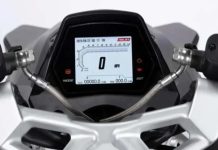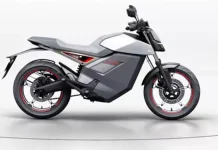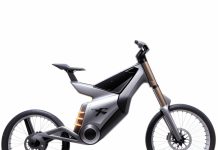Hyundai Ioniq 2
Hyundai is developing the Ioniq 2, an entry-level electric vehicle (EV) positioned below its Ioniq 5 and 6 models, as part of its push towards electrification. Targeting a 20,000 euro price point, the Ioniq 2 aims to enhance EV affordability, focusing on markets in Europe, Australia, and New Zealand.
Utilizing the new Integrated Modular Architecture (IMA) and eM platform, it emphasizes cost reduction through standardized components. Slated for a 2025 debut, the Ioniq 2 is integral to Hyundai’s strategy to become a leading EV manufacturer, contributing to its goal of selling 3.6 million EVs by 2030.

Electric Vehicle (EV)
Hyundai is indeed progressing with the development of a new electric vehicle, the Ioniq 2, designed to be positioned below its existing Ioniq 5 and Ioniq 6 models. This move aligns with Hyundai’s broader strategy to advance its electrification efforts and expand its EV offerings globally. Andreas-Christoph Hofmann, Hyundai Europe’s VP of Marketing, has indicated that the Ioniq 2 is being developed as an entry-level electric car. The company is targeting a price point of approximately 20,000 euros for this vehicle, which is expected to offer a reasonable range and benefit from a new platform aimed at reducing manufacturing costs.
Affordable EV
The Ioniq 2 is likely to be an electric hatchback, primarily targeting markets in Europe, Australia, and New Zealand. It’s part of Hyundai’s overarching goal to become a top three EV maker by 2030, with plans to sell 3.6 million EVs by the end of the decade. This ambition also includes the introduction of 13 new EVs across Hyundai, Kia, and Genesis brands, all powered by Hyundai’s Integrated Modular Architecture (IMA) platform by 2030.
The Ioniq 2 is expected to feature the new eM platform, which falls under the IMA and represents a significant evolution from the current Electric Global Modular Platform (E-GMP) used in the Ioniq 5, Ioniq 6, and the upcoming Ioniq 7. The IMA and eM platform aim to standardize components like the chassis, battery system, and motor to reduce development and production costs. Hyundai plans to incorporate a cell-to-pack system and offer six types of battery packs with varying chemistries, all operating at 800 volts.
Integrated Modular Architecture (IMA)
The key aspects of Hyundai’s development of the Ioniq 2 electric vehicle are:
- Market Positioning: The Ioniq 2 is positioned below the Ioniq 5 and 6, targeting entry-level EV consumers.
- Pricing Strategy: Aimed at a base price around 20,000 euros, addressing the affordability challenge in the EV market.
- Target Markets: Focused on European countries, Australia, and New Zealand.
- Platform Innovation: Utilizing the new Integrated Modular Architecture (IMA) and eM platform to standardize components and reduce costs.
- Battery Technology: Planning to use a cell-to-pack system with various battery packs, operating at a higher voltage of 800 volts.
- Release Timeline: Anticipated debut and sales commencement in 2025.
- Strategic Goal: Part of Hyundai’s broader plan to be a top three EV maker by 2030 and to sell 3.6 million EVs by the end of the decade.
2025 EV launch
Pros and cons of Hyundai’s upcoming Ioniq 2 electric vehicle
| Pros | Cons |
|---|---|
| Affordable Pricing: Targeted at around 20,000 euros, making it more accessible to a broader range of consumers. | Limited Market Focus: Initially aimed at European countries, Australia, and New Zealand, which may limit availability in other regions. |
| Innovative Platform: Utilizes the IMA and eM platforms for cost-effective manufacturing and standardized components. | Delayed Availability: Set to debut in 2025, which means potential customers will have to wait. |
| Battery Technology: Plans for advanced battery systems, including a cell-to-pack system and 800-volt operation, for enhanced efficiency. | Competition: Faces stiff competition from other manufacturers also targeting the affordable EV segment. |
| Strategic EV Expansion: Part of Hyundai’s goal to become a top three EV maker by 2030, indicating strong company backing and future support. | Range and Performance: Specific details on range and performance are yet to be confirmed, which are crucial factors for EV buyers. |
| Environmental Impact: As an EV, it contributes to reduced emissions and supports the transition to sustainable transportation. |
Sustainable transportation
Overall, Hyundai’s strategy with the Ioniq 2 reflects a significant effort to make EVs more accessible and affordable, thereby expanding its market reach and solidifying its position in the rapidly growing electric vehicle sector.
As for the release date, the Ioniq 2 is expected to debut and go on sale in 2025. This timeline is in line with Hyundai’s plan to launch its first eM platform-based EV in the same year. Hyundai’s approach to introducing the Ioniq 2 and other EVs reflects a competitive strategy to meet the growing demand for affordable electric vehicles and position itself as a leader in the EV market.
Conclusion
For automotive enthusiasts and potential EV buyers interested in Hyundai’s latest developments, staying updated on the progress of the Ioniq 2 is essential. As this new entry-level electric vehicle promises affordability and innovation, it represents a significant step in the EV market.
To keep abreast of the latest news, updates, and eventual release of the Hyundai Ioniq 2, be sure to follow reliable automotive news sources, subscribe to Hyundai’s official channels, and consider joining relevant online forums and communities where discussions about new EV models are frequent. This proactive approach will ensure you remain informed about this exciting development in the world of electric vehicles.
TeamBHP,Elektrek , Autoblog and TopelectricSuv





































